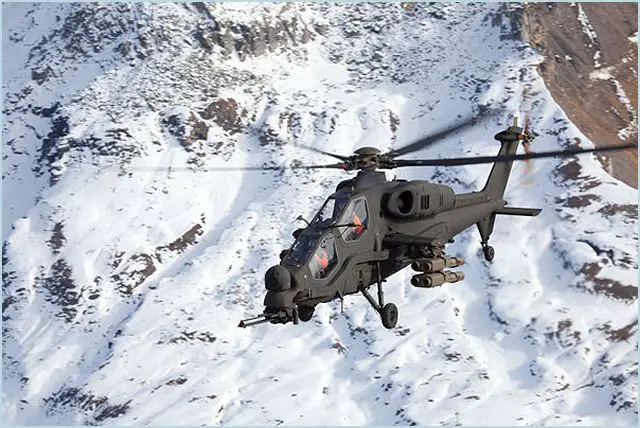Breaking news
First Turkish-made attack helicopter ATAK T-129 will delivered in 2013 2703122.
| a | |||
| |
|||
World
Air Force News - Turkey |
|||
First
Turkish-made
attack helicopter ATAK T-129 will delivered in 2013. |
|||
Turkey’s
Undersecretariat for the Defense Industry has disclosed a new five-year
strategic plan, which finalizes completion dates for key projects including
Turkish-made tanks, aircraft, satellites, destroyers, and ATAK
T-129 helicopters, in a bid to lift the country’s defense
industry into a higher league. |
|||
Atak
T-129, an attack helicopter, and Anka, an unmanned aerial
vehicle, will be delivered in 2013 and 2014 respectively. The TAI/AgustaWestland
Atak T-129 is an attack helicopter currently under development for the
Turkish Army. An enhanced version of the Agusta A129 Mangusta, the T-129's
development is now the responsibility of Turkish Aerospace Industries
(TAI), with AgustaWestland as the primary partner. The ATAK T-129 will feature a 20 mm gatling style cannon on a nose turret. It will be able to carry combinations of 70 mm rocket pods, Stinger air-air missile pods, and gun pods on its stub wing pylons More than 280 projects have been carried out since 2011, according to the new 2012-2016 strategic plan. The total value of the contracts the undersecretariat signed last year was about $27.3 billion. The plan envisages Turkey’s defense industry entering the top 10 worldwide within five years. The total turnover target for defense and aerospace industry exports for 2016 is $2 billion, out of an overall industry turnover of $8 billion, according to the plan. Turkey will establish liaison offices in the Middle East, the Far East, the U.S., the Caucasus-Central Asia, and in Europe (EU-NATO). The undersecretariat will encourage collaboration between prime contractors, sub-industries, and small and medium enterprises, with universities and research institutions improving the technological base. The Turkish government will support the establishment of testing and certification centers that meet international standards, in order to meet non-military and non-public sector demands. A land vehicle test center, a high-speed wind tunnel, an aerial vehicle flight test field, a missile systems test field, a satellite assembly center, and an integration and testing center will be among these facilities, according to the strategic plan. |
|||



























